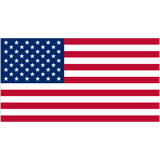
It's time for the USMNT to ditch the 4-3-3

You don't want to take too much from a friendly, especially one with a slew of second-choice players like the one the United States played against New Zealand on Tuesday. And you shouldn't turn those 90 minutes into much more than it is, but the match did confirm something that we probably already knew: the Americans' 4-3-3 doesn't work.
Jurgen Klinsmann sent the U.S. out with a three-man midfield of Michael Bradley, Sacha Kljestan and Perry Kitchen. Theoretically, it makes sense, with Kitchen a true holder, Bradley getting to play in a box-to-box role and Kljestan an attack-minded passer. But the midfield never really took shape as imagined. They struggled to connect passes together, moved a bit slowly and often didn't seem to know where each other were, conceding space for New Zealand to exploit. Chalk it up to a lack of energy for such a low-profile match, the three having not played together before or even a lack of understanding how they were supposed to operate, it didn't work very well.
Further up the pitch, things weren't much better. Julian Green and DeAndre Yedlin flanked Jozy Altidore, which, again, should have worked. Yedlin isn't normally that far up the pitch, but his pace causes problems and space should have been plenty available, while Green is a threat to cut in from the left and Altidore is in terrific form. But Yedlin didn't get many dangerous opportunities, Green was bright and even scored a goal as he showed what he can do with the ball at his feet, but was too often anonymous, and Altidore never really got any chances. All the while, the trio didn't function well either pressing or dropping deeper defensively.
Again, it's just one match. One friendly that didn't mean much. But it was right in line with what we've come to expect from the Americans' 4-3-3.
Remember, the U.S. played in the same formation to start Copa America, losing to Colombia in it and then starting slowly with their tournament lives on the line against Paraguay. Just as was the case against New Zealand, the midfield was disjointed and slow, rarely connecting passes or showing any ability to take of space offered to them on the counterattack. They were static on the ball and often lost track of runners in defense as well. But moving Bobby Wood from the wing to a traditional center forward role and morphing into a 4-4-2 saved the U.S. at Copa America and it's clear that the two-man front line is the Americans' way forward now.
With the way that Wood and Altidore have played of late, the Americans can't afford to put one on the bench. They've both been terrific and Altidore especially plays better with a strike partner. They've also shown they can play well together. So that alone makes the 4-3-3 a bad fit for the U.S.
Meanwhile, the 4-3-3 doesn't really fit a preferred starter like Alejandro Bedoya especially well, neutering his two-way role on the wing that leans upon his ability to defend as well as attack. The center of the pitch can be a concern in a 4-4-2, with no true defensive midfielder having stepped up and the lack of a clear partner for Bradley, but there are going to be problems somewhere no matter what the U.S. do. But at least players are comfortable in a 4-4-2 and have a better understanding of what everyone should be doing in that set-up. But more than anything, it's not a 4-3-3.
It's not often wise to throw an entire formation in the trash, especially since formations are so broad. There are so many ways to play in a 4-3-3, just like there is a 4-4-2. But the U.S. have tried a lot of them this year and the only thing they have in common is that it doesn't work for this team and it will probably be a while before we see it in a match that matters.
MORE FROM FOX SOCCER:

